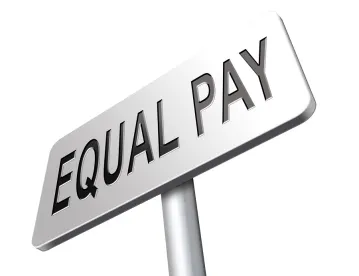In U.S. Equal Employment Opportunity Commission v. Maryland Insurance Administration, No. 16-2408 (January 5, 2018), the Fourth Circuit Court of Appeals addressed the application of the summary judgment standard to a claim brought under the Equal Pay Act of 1963 (EPA). The Fourth Circuit held that once a plaintiff has made the required prima facie showing under the EPA, the employer is not entitled to summary judgment unless it proves a statutory affirmative defense so conclusively that no rational jury could reach a contrary conclusion.
Background
The Maryland Insurance Administration (MIA), an independent state agency charged with the regulation of Maryland’s insurance industry and the enforcement of Maryland’s insurance laws, assigned new hires to grade levels corresponding to positions and established the salary of new entrants based upon a step-placement system which took into account entrants’ prior work experiences, relevant professional designations, licenses or certifications, prior years of service in state employment, and the difficulty of recruiting for particular positions.
In 2015, the U.S. Equal Employment Opportunity Commission (EEOC) filed a lawsuit in the U.S. District Court for the District of Maryland on behalf of three women who had formerly worked as fraud investigators for the MIA. The former employees joined the MIA between December 2009 and July 2011, and later learned that their salaries were lower than certain male fraud investigators employed by the MIA. After the parties filed cross-motions for summary judgment, the district court held that the male fraud investigators were not appropriate comparators because they had been placed into higher step levels than the claimants upon employment with the MIA. Alternatively, the district court concluded that the MIA had shown that the disparity in pay was attributable to differences in the relative experience and qualifications of the female employees and the male comparators. The EEOC appealed the entry of summary judgment to the Fourth Circuit.
The Fourth Circuit’s Decision
In a 2–1 decision, a three-judge Fourth Circuit panel vacated the district court’s entry of summary judgment. First, the court examined whether the male fraud investigators were proper comparators. Underscoring that it was undisputed that the female fraud investigators had received lower starting salaries than their male counterparts, the court noted that nothing in the record demonstrated that the skill, effort, or responsibility required of the female fraud investigators differed from the skill, effort, or responsibility required of the male fraud investigators—and that the MIA had admitted that the jobs were identical. In addition, the court held that the alleged superior experience and professional designations, licenses, or certifications of the male fraud investigators that the MIA had asserted to justify their placement at higher step levels were relevant only to an affirmative defense which the court would not consider when determining whether the EEOC had established a prima facie case under the EPA.
Examining the MIA’s affirmative defenses in greater detail, the court held that the MIA had not discharged the burden of ultimate persuasion that had shifted to it once the prima facie case had been established. Acknowledging that the standard salary schedule utilized by the MIA was facially neutral, the court held that a fact finder could nonetheless conclude that the MIA had considered the gender of a new hire when assigning a specific step and salary range. Similarly, the court held that a factual dispute existed as to whether the MIA had actually considered the experience and qualifications of a successful applicant when it established a starting salary.
Joining the approach previously taken by the Third Circuit and the Tenth Circuit, the Fourth Circuit held that an employer can avoid liability under the EPA only if it demonstrates that its proffered reasons in fact explain a wage disparity between males and females. As the court noted, merely asserting that a proffered reason could explain a wage disparity is not enough to prevail at summary judgment. Additionally, the court issued a reminder that a viable claim can be brought under the EPA merely by showing that a male comparator was paid more for performing substantially equal work than a female employee, even if other male comparators were paid the same or less than the aggrieved female employee.
Questioning the need for and implications of the federal judiciary’s entanglement in a state’s regulation of its workforce, the dissent argued that the MIA’s gender-neutral policies, which recognized prior service in state government and took into account entrants’ qualifications and prior work experiences, were consistent with provisions of state law governing civil service positions. Focusing on the factual record, the dissent emphasized that dissimilar periods of prior state employment and different professional certifications appropriately were considered by the MIA in establishing initial salaries of each female complainant and each male comparator. The dissent also noted that the initial salaries paid to other male fraud investigators who were not designated as comparators buttressed the conclusion that the MIA set salaries based upon factors other than gender. Based upon these considerations, the dissent maintained that application of the majority’s test should have resulted in a decision to affirm the entry of summary judgment in favor of the MIA on the EPA claim.
Key Takeaways
The Fourth Circuit’s ruling provides another reminder of the practical challenges that employers can face when defending wage differentials which result from different starting salaries. Even when gender-neutral criteria are utilized to guide an initial offer, an employer’s determination may be subject to challenge years after the fact if decision makers are permitted to exercise discretion in applying otherwise neutral criteria. Absent creation and retention of a clear, contemporaneous record of the manner in which discretion was actually exercised to make pay decisions, it can be challenging for an employer to adduce evidence that is strong enough to secure dismissal of an EPA claim as a matter of law prior to trial.



 />i
/>i

